Façades play an important role in regulating natural heat generated by the sun. Sustainable façades can be defined as elevation designs that promote the use of green materials and conserve energy. Sustainable façades reduce the energy consumption of buildings, ensure thermal comfort, visual effect, and acoustic, and improve air quality. It is a new approach to maintaining the integrity of the building for future generations. Green façades or vegetative walls are designed by aiding the growth of green climbing plants upward and across the front portion of the building. The green façade impacts the overall building's thermal performance. Designing the green façades is a nice choice but do we know about materials best suited for building green façades? Before designing the elevation, various parameters are studied to ensure the comfort of living. The various parameters are: [caption id="attachment_43847" align="alignright" width="300"] Green façades or vegetative walls are designed by aiding the...
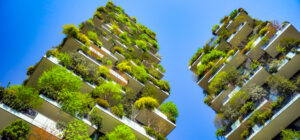
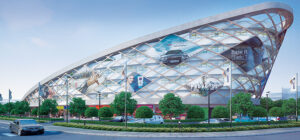
Intelligent and Adaptive Façade Design
Nature by its foreface offers enormous resources to support the comfortable existence of the dwellers, therefore understanding the principles of nature, and abiding by them, results and reflects in maintaining the equilibrium and balance between nature and human interventions. The philosophy of evolution justifies its cohesive adaptability on environmental grounds by subtly being interdependent, yet individually significant. Nature is self-healing and has the power to recover from any kind of natural destruction. It is the interference of mankind that caused an imbalance and irregularity in the rhythmic functioning of nature. Humans built shelters for their protection with the resources being drawn from nature. Until the point where 'dependence on nature for resources' became 'exploitation of nature for resources', the equilibrium was very well maintained between nature and mankind. "Understanding nature and choosing materials for buildings rapidly helps in energy conservation and therefore reduces the carbon footprints and develops a netzero...
Posted on: 03 Jun 2021
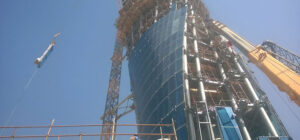
“A Well-Designed Curtain Wall is the One that Connects All Points on the Magic Triangle of Cost, Quality, and Time”
What are the key elements of curtain walling systems? The curtain wall system is a non-load-bearing façade system that usually consists of a lightweight frame structure with various types of infill panels. A common curtain wall consists of aluminium frames and glass infill. Aluminummullion and transom as profiles, mainly made of alloy, have good extrudability, high-quality finish, corrosion resistance and brackets normally with structural alloys. Glazing can be thermally performance and non-performance. It can vary from monolithic, laminated, insulated units of double or triple glazing. What are the characters of a well-designed curtain wall? In short, a well-designed curtain wall is the one that connects all points on the magic triangle of cost, quality, and time. When I say quality, it is in terms of performance, aesthetics, and its performance or longevity against design life. [caption id="attachment_43164" align="alignleft" width="217"] Many times, the contractors have special teams to install the façade...
Posted on: 20 Apr 2021
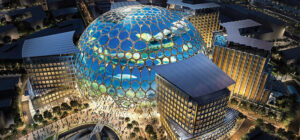
Effective Curtain Walls for Longer Life of Buildings
A curtain wall is a nonstructural exterior covering of a building that is connected to the frame and used to withstand the effects of environmental elements including wind, rain, etc. For better performance of the façade of the buildings, it is very important to carefully study the curtain wall during the design stage to take into consideration all of the performance criteria such as air and water tightness. The selection of the right material and the design elements for the curtain wall are critical to giving longer life to the building. We interviewed a few top names from the Middle East’s façade industry to learn more about effective curtain walling. Here are experts' views and some trips that should be followed. The Key Elements of Curtain Walling Systems [caption id="attachment_43267" align="alignright" width="150"] Douglas Sum Partner and Co-Owner, Heroes Architects and Engineers[/caption] Douglas Sum, Partner, and Co-Owner, of Heroes Architects and...
Posted on: 16 Apr 2021
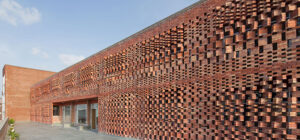
Better Fenestration for Future Buildings
In the realm of architecture, the building envelope or the façade is increasingly becoming the most important component with regards to building performance and architectural design. As a synthesis of building elements, the façade acts as interface between the interiors and the exteriors. Thus, the manner in which we design this spatial boundary—to enable a seamless transition between two disparate environments is of critical relevance. For a multi-storeyed building, if we were to set aside the highestfloor or roof and conduct a solar insulation analysis (a study that quantifies the solar exposure incident on the building), we would observe that the lower floors receive solar exposure only from the façade. Hence, the façade acts as the only potential source of external heat gain from the sun and from conduction and convection through air. In this regard, façade treatment with respect to the climatic considerations is extremely significant, especially in urban...
Posted on: 07 Apr 2021
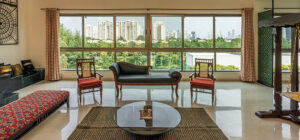
Effective Fenestration Through Improved Designs & Systems
Efficient buildings are designed to provide occupants with a comfortable, safe, and healthy living and work environment. This requires superior architecture and engineering designs, quality construction practices, and intelligent operation of the structures. According to a study in the USA, the major areas of energy consumption in buildings are heating, ventilation, and air conditioning—35% of total building energy and lighting consumes —11%. Façade and fenestration is often considered the biggest hurdle in achieving higher levels of energy efficiency in buildings. Building owners opt for the most efficient façade and fenestration system which contributes to energy conservation, thereby operational costs. This edition cover story on “Effective Fenestration Through Improved Designs & Systems” discusses key factors such as characteristics and main features of sustainable and efficient façades and fenestration, ideal wall-window ratio, and improved acoustics and thermal comfort through proper design and installation of fenestration. It also throws light on the ways...
Posted on: 06 Apr 2021
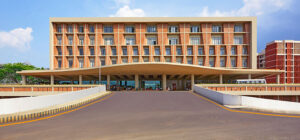
IMK Architects Win Top Awards at Surface Design Awards 2021, London
Mumbai-based architecture and urban design firm IMK Architects was honoured as a Winner at the prestigious 2021 Surface Design Awards, London, for the Symbiosis University Hospital and Research Centre (SUHRC), in a virtual ceremony on February 11. The firm also won in the 'Public Building Exterior' category for its design of SUHRC, a 96,000-square-metre, 216-bed, multi-speciality hospital in Lavale, near Pune, India. Winners in the 12 categories were chosen from a pool of over 100 projects across the world. The award jury, co-chaired by Nicola Osborn from London-based multidisciplinary design studio, Basha-Franklin and Steve Webb of Webb Yates Engineers, London, commended IMK Architects for the use of Compressed Stabilised Earth Bricks (CSEB) at SUHRC. CSEB is a naturally-compressed, sundried earthen brick, which is low-cost and environment-friendly.IMK Architects used a mix of locally available red soil, sand and murum (deep red/brown soil found in tropical regions) to create these bricks for...
Posted on: 23 Feb 2021
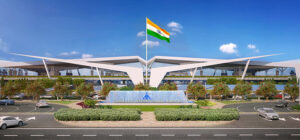
The New International Terminal Guwahati Airport Building: Providing the Highest Degree of Safety from Fire
Fire safety in airports is a major issue. What are the main causes for the same relating to the façade and fenestration design? Since airports are extremely important public buildings and mass transit areas, occupied by thousands of people at any point, fire and life safety are very critical. Combustible exterior cladding materials present an increase in fire hazards which result in fire incidents. Most death incidents are related to smoke exposure and toxicity rather than direct flame and heat exposure. Falling, burning debris can be a significant hazard and can cause downward fire spread. Hence the use of fire-safe façade cladding materials, which are absolutely non-combustible and fall under Class A1 /components with the limited release of toxic smoke (A2-s1,d0) by the third-party accredited certified testing laboratories, is critical to ensure complete safety of human life and property damage. Airport design should not compromise on the material specification with...
Posted on: 01 Feb 2021
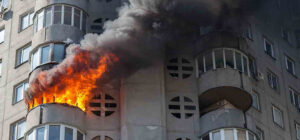
Exterior Wall Flammability: Fire Safety & Façade Designs
Façade is one of the most susceptible elements of building design. The majority of the population, being ignorant about the performance of the material, often fail to understand the veracity that the façade design plays, especially in controlling or propagating the spread of fire. With more emphasis on aesthetics, energy efficiency, cost factor, etc., fire safety has always been kept under the radar. However, keeping in view the present market trends, this has gone beyond just the aesthetic part and plays a more prominent role in light conveyance, acoustics execution, and effectiveness. The scenario has become more complex with the unstoppable mushrooming of high-rise buildings which pose a greater fire hazard. Though there are numerous fire safety-related codes and standards, in India these are scarcely followed. When it comes to façades, it is mostly influenced by the pure considerations of alluring appearance and pricing, and is yet to hit the...
Posted on: 06 Jan 2021

Why is Fire Safety Such a Big Deal In High-Rise Buildings?
Reena Mukerjee looked up in horror at the smoke billowing from the 27th floor of the building which houses her office her own Architectural firm ‘Reema Athreya and Boon’, located on the top floor of this 39 storied glass clad high-rise. The fire safety was raging and as she watched some of the glass panels shattered and the flames leapfrogged towards the floor above. The high winds were helping the fire burn even more vigorously and it looked like very soon the entire structure above the 27th floor will be fully gutted soon. Only divine intervention can help. She prayed fervently with all her heart. “OH God! please do something. Please bring the fire to douse itself. Please save all those people who are stuck in the building and fighting for their lives”. Will her prayers be answered? It all depends. This is a familiar scenario which plays out many...
Posted on: 17 Dec 2020
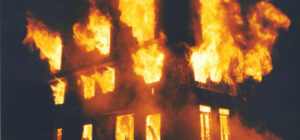
Façade Designing and Material Selection for Fire-Safe Buildings
Façade designs and materials have been improvised in the past years to meet the fire safety regulations in the Middle East. The façade materials should be appropriately tested and fire stopping is also very important to ensure the safety of the buildings. Specifying the correct product is vital but the quality of the installation of the product is vital too for ensuring fire protection. The safety of life is a vital aspect that should be considered during the design and material selection section of buildings. A fire-safe façade does not propagate fire but it also prevents or not allows the fire and heat to travel from one area to another. This cover story focusing on the major reasons behind fires in buildings in the Middle East, the façade material selection and design approach for a fire-safe building, the importance of compartmentation and fire stop, etc. Façade Design And Fire Safety...
Posted on: 26 Nov 2020
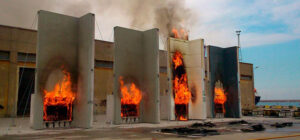
“The Most Significant Impact on Building Fire Safety in the Façade Design is the Potential to Breach Compartmentation”
What are the impacts of façade design on the fire safety of buildings? There are quite a few impacts, such as falling debris and fire spread between buildings. However, the most significant impact on building fire safety in the façade design is the potential to breach compartmentation within the building. All buildings are divided into defined compartments. These compartments are separated by construction that can achieve a level of fire resistance/fire stopping. The purpose of doing so is to restrict the spread of fire and contain heat & smoke to the area where the fire originated. Curtain wall systems, or other types of insulated façade designs, have the potential to offer a path for fire spread between compartments. If this occurs the façade design can breach the fire-resistant separation resulting in a much larger fire than assumed within the design of a building’s fire strategy. The consequences are that people...
Posted on: 24 Nov 2020
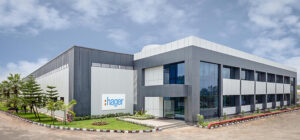
“GFRC is an Ideal Material for Building Envelopes”
What are the 4 key trends in exterior wall cladding? Cladding, besides decorative appeal, is beneficial with its isolating characteristics of the soundproof and thermal insulation. While considering all aspects given above, glass façades, ACP cladding, metal claddings and GFRC cladding panels, etc. are the most trending cladding material /solutions which are now improvised and used. How would clever use of cladding technologies and materials regulate daylight and ventilation as well as provide privacy? As an architect it’s our responsibility to make the building more climate responsive and hence the façade to be intelligent and adaptive. Such façades include rear ventilated, double skin, kinetic, etc. which show better performance index in varied aspects. [caption id="attachment_41732" align="alignleft" width="300"] IRICEN hostel building[/caption] According to you what is the most preferred and dominant cladding material in this industry at present and why? Glass has been the foremost choice across the country, although bemoaned...
Posted on: 15 Oct 2020
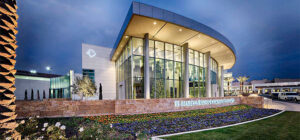
The Ground Rules of Post-Pandemic Façade & Fenestration Designs Occupant Wellness Ensured by a Modular & Agile Approach
With the rapid spread of COVID-19, designs for a world will never be quite the same, especially for large public spaces, like airports, hotels, hospitals, gyms, and offices. This is an opportunity to rethink everything, including how we design and build façades and fenestration to be even more resilient, healthy, beautiful, green and creative. This is our time to come together and not just imagine but ideate and advocate for a future where the world is in harmony with nature, and where innovation and imagination are valued for solutions that enhance the quality of life. [caption id="attachment_41449" align="alignleft" width="150"] Anoop Devasia Lead Architect, PM Group[/caption] Can we shift from trying to save the bottom line to designing buildings that are carbon neutral because they reduce energy consumption, and participate in regenerating resources while offering ample space in which to live? Here are some fresh ideas by a few experts for...
Posted on: 11 Sep 2020
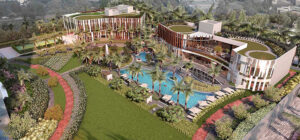
Firestops: a passive Route to Safety is on the Rise
Tall buildings continue to play a significant role in meeting our housing and workspace needs with high-rise curtain wall systems being one of the most recognizable components of today’s tall buildings. But along with this has come the increasing importance of passive fire protection solutions playing a vital role in these buildings, mitigating the effects of fire, saving lives and property. Passive fire protection solutions such as firestops are crucial to prevent the passage of flames and noxious gases from one compartment floor or room to the next. Fires in high-rise buildings can generate large quantities of smoke that tend to spread vertically throughout the building, even if the fire is contained in one room. Smoke travels up to 130 meters every minute and whilst most people can easily move at this rate in normal circumstances, the majority of survivors of fires stated that smoke restricted their ability to see...
Posted on: 13 Aug 2020
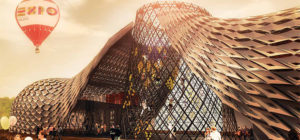
Biomimicry Inspired Façades & Computational Design
Have you ever wondered how trees grow into harmonious proportions and structural equilibrium, how a cactus grows in the desert even after the scarcity of water or how birds construct their structurally stable and beautiful hanging nests? Answers to all these questions are hidden in nature. Nature has divine secrets pertaining to its biological and natural processes which follow some algorithmic rules that secretly pre-exists in this universe. Nature has always inspired mankind through these whimsical secrets. In history, many humans took advantages of these natural secrets to inspire themselves to solve human problems. Earliest examples include Greek philosophers who studied design of organisms to attain balance and proportion in classical art and Leonardo da Vinci who was inspired by flying birds to invent flying machines. This imitation of nature eventually got recognised by scientists and the term ‘Biomimicry’ was coined in 1982. Figure 1: Underside structure of water lily...
Posted on: 17 Jul 2020

